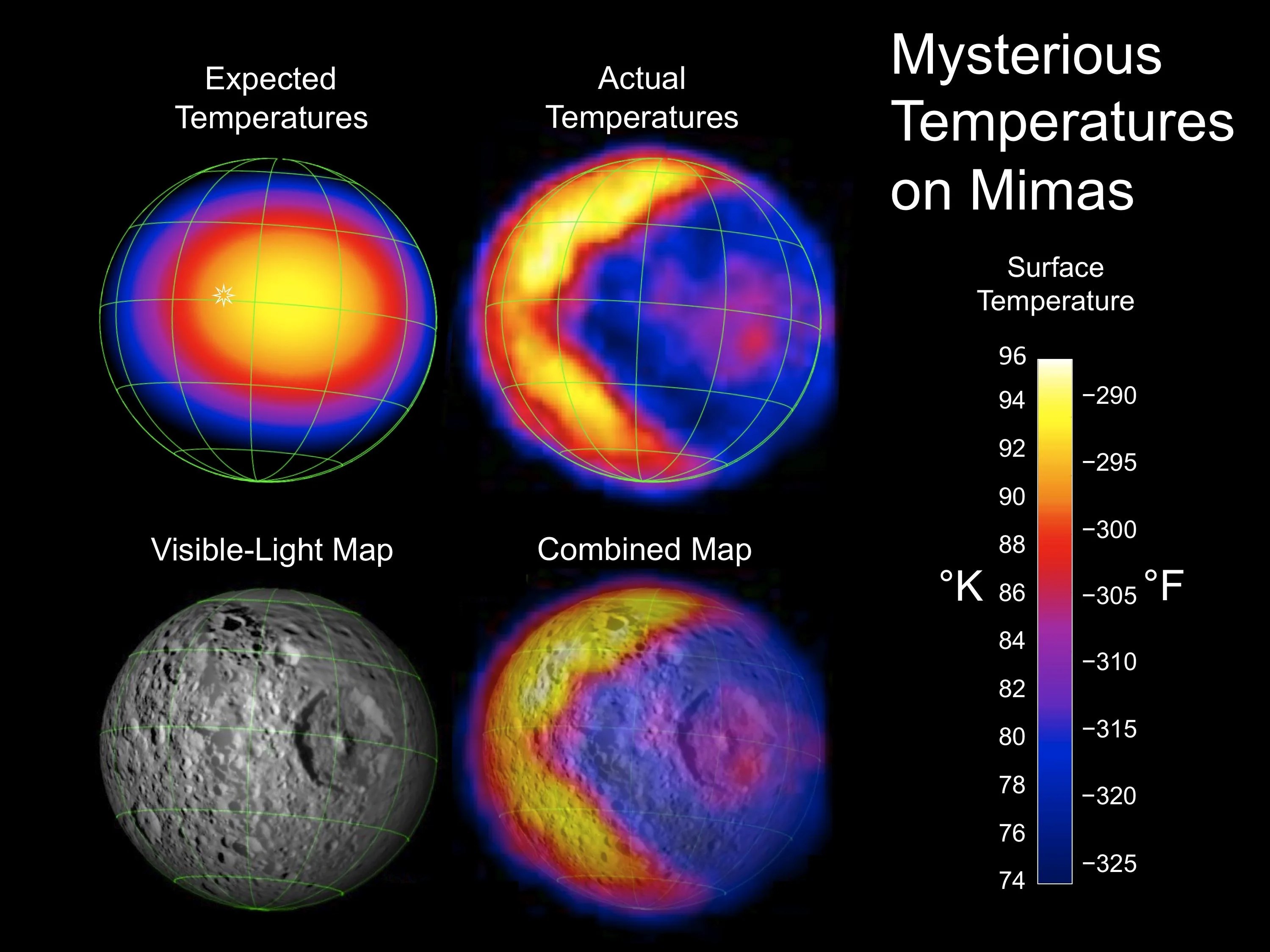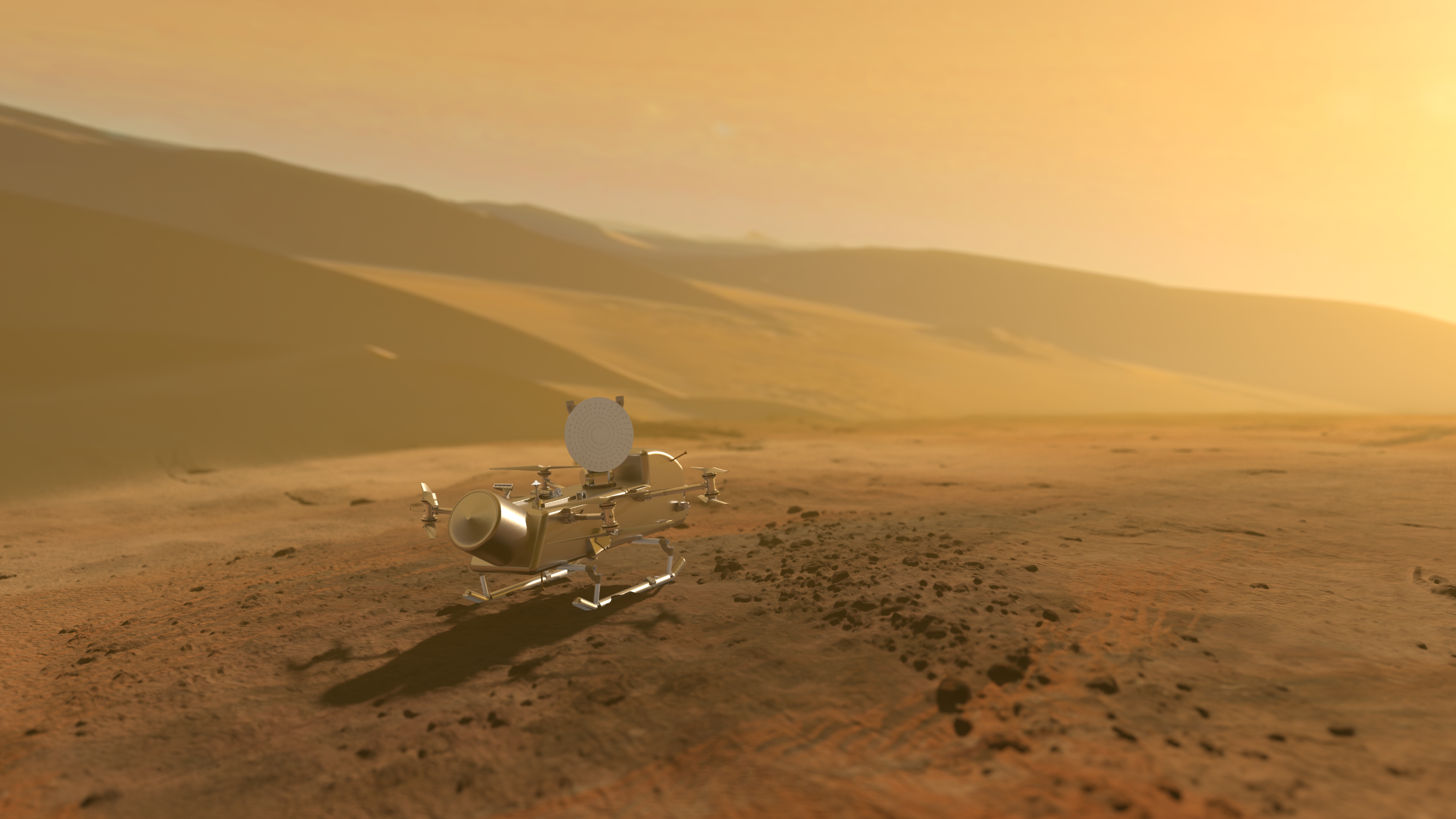5 min read
Todd J. Barber, Cassini lead propulsion engineer
I recently conducted my first "long-distance" interview for "Insider's Cassini," talking with Dr. John Spencer of the Southwest Research Institute (SwRI) in Boulder, Colo. Dr. Spencer is a co-investigator on Cassini's composite infrared spectrometer (CIRS), and he contributed to the recent press release about unexpected Mimas temperature data, which really caught my attention. I thought I would use this column to ping John further about the press release, Mimas, and CIRS science in general. We talked at length about the rich scientific legacy of CIRS (atmospheric temperature profiling of Jupiter, Saturn, and Titan; molecular abundance profiling of Titan's hydrocarbons; and assessment of temperature, thermal inertia, and grain sizes for Saturn ring particles), but to keep this column manageable, I'll have to save those discussions for another time.
Dr. Spencer's primary science interest is using CIRS to measure thermal emission from icy satellites, such as Enceladus, Iapetus, and Mimas. In contrast to the visual and infrared mapping spectrometer (VIMS), CIRS operates in longer infrared wavelength bands, uses thermal emission instead of solar reflection spectra, and generally is not sensitive to composition differences on solid surfaces. Emission spectra of Saturn's icy satellites can be used to infer surface temperatures, which were expected to vary in a predictable way, and some moons indeed have fit expectations in this regard, such as Dione, Rhea and Tethys. For example, one would expect colder temperatures near the polar regions of icy moons vs. the equator, warmer temperatures near local noon, etc. John's life became a "lot more interesting" with the CIRS discovery that the Enceladus south pole was the warmest portion of this moon, shockingly much warmer than the equator. Thus began a string of surprising and perplexing revelations enabled by CIRS, often with corroborating data from other Cassini science instruments. Dr. Spencer is very excited for August of this year, when another Enceladus flyby will allow quite favorable geometry for CIRS scans of the south pole; he is hopeful that CIRS will measure maximum temperatures of 180 Kelvin or even warmer. This is bitterly cold by Earthly standards but positively balmy for the outer solar system, and such observations would have important implications for the potential of Enceladus subsurface water. In John's words, he "can't wait for August!" There's more good news ahead for CIRS, too-unlike other optical remote sensing (ORS) science instruments, it can "see in the dark." As the south pole of Enceladus plunges into darkness over the next few years, exploration of hotspots and "tiger stripes" on Enceladus may continue!
CIRS data from a September 2007 flyby of Saturn's "black-and-white cookie" moon, Iapetus, were perhaps less surprising than Enceladus, but they did allow determination of the rate of water evaporation. There was a press release a few months ago about this work, along with an article in the prestigious journal "Science." It turns out that water evaporation from the dark regions, as calculated from CIRS data, and condensation in the bright areas help explain why Iapetus "looks so weird." These large differences in albedo on Iapetus do a lot to explicate the temperature differences CIRS noted across this oddball moon. But a huge surprise from the February 2010 observations of Mimas is that Mimas, too, has similarly large temperature differences across the surface-but lacks the surface brightness features to explain it! John and his team believe Mimas' thermal inertia has to be higher in the colder regions-a LOT higher. In this case, heat could soak into the Mimas interior more easily rather than raise the temperature of the surface. The shocking inference is that the thermal conductivity has to be at least ten times greater in the cold regions vs. the warmer regions-with minimal apparent difference from visible-wavelength observations! Just what is going on out there? We know the cold parts of Mimas seem "slightly bluer" (in visible wavelengths) and that the giant crater, Herschel, is within this cold region, but that may be just a coincidence. Personally, I enjoyed Dr. Spencer's playful "theory" that Mimas really IS the "Death Star" and that one Darth Vader has cleverly applied a coating of paint that can fool the visible-light cameras, but not the prying eye of CIRS.

Unfortunately, this was the final close flyby of Mimas for Cassini, but the data gleaned from February's flyby will occupy John and his team literally for years. Also, fortuitously, the February discovery came on a Thursday morning. After John's team "fell off their chairs," they attended a previously scheduled satellite science meeting the next morning to share their surprising results. This whopper of a discovery helped convince the team to plan for more Mimas observations later this year, albeit from a more distant vantage point.
John has an impressive resumé in his field-he obtained a B.S. in geology from Cambridge and a PhD in planetary science from the University of Arizona. He was always "keen" on astronomy as well, so this position is the perfect marriage of Dr. Spencer's interests. He was even fortunate enough to come to JPL in the early 1980's as a young PhD student and witness the first close-up images of Mimas, taken by Voyager. Given the debut of "Star Wars" only four years earlier, the eerie resemblance of Mimas to the "Death Star" was all the buzz nearly thirty years ago. Incidentally, given the CIRS surprises at Mimas, Dr. Spencer said they may have to rethink other icy moons-perhaps they're not as "dull" as previously thought! Thank you for your time, Dr. Spencer-and I hardly think anything we discussed could be described as "dull"!







